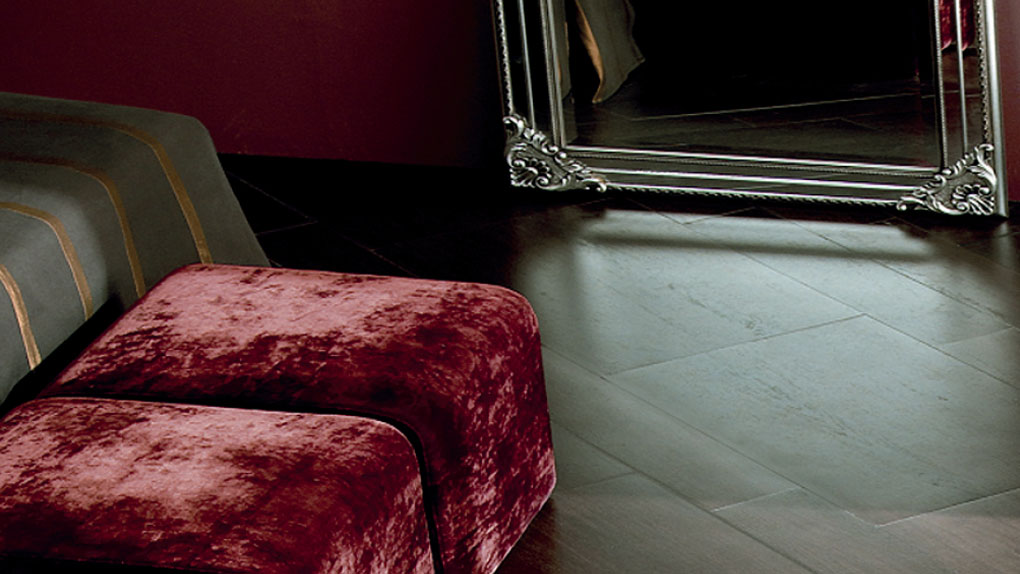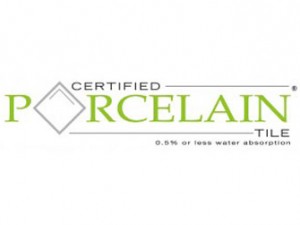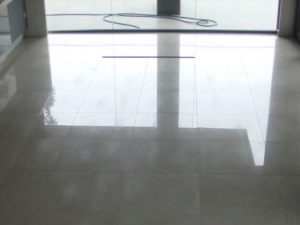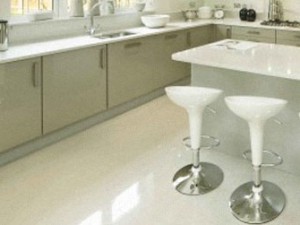
Porcelain tile is rapidly becoming the major selling type of tile. Porcelain tile is extremely strong and durable due to its composition and high temperature at which it is baked. Recently the technology in creating more attractive designs has advanced and now offers a wide variety of formats that imitate marble, travertine, slate, fabric, concrete, wood, leather, etc. These durable and beautiful looking tiles have increased the popularity and sales of porcelain tile in general. There are several main types of porcelain tile: glazed, full body, coloured body, double loaded and others which are going to be discussed further. All types of porcelain tile are more durable and dense than ceramic tile and require less maintenance than natural stone and hardwood.
Full Body or Through-Body Porcelain Tile
Full Body porcelain tile means that the tile’s colour and texture is uniform throughout the tile, not just along the surface. Full Body porcelain tile is extremely strong, durable and able to withstand freezing temperatures. It is the strongest type of tile. Unless they have a polished finish, these tiles are slip resistant, scratch and chip resistant which makes them ideal for commercial locations. The colour won’t fade and if a tile does chip, the colour is the same underneath, making the chip less noticeable. These tiles can also be installed in homes as flooring, on walls and in wet areas such as bathrooms.
Coloured Body Porcelain Tile
Coloured Body porcelain tiles possess same quality characteristics as the rest of porcelain products (such as water absorption of < 0.50%) and are similar to Full Body tiles, but there is a slight difference between them. Full body porcelain tiles are produced using coloured raw materials that pervade the entire tile, incorporating uninterrupted colour and pattern features seen on the surface all the way through the tile body. Coloured Body tiles are created with continuous coloured stains from the glaze surface throughout the body of the tile. Synchronizing the colour of both the glaze and body lessens the visibility of any impact chips which may occur. The colour remains consistent throughout the tile, but any surface design does not continue through the tile body.
Glazed Porcelain Tile
The glaze is usually tinted and is a liquid glass layer that is baked into the surface and gives the tile its final colour. If glaze is then polished, the tile must be sealed after installation to make it non-porous. The glaze finish makes the tile stain resistant and provides an infinite number of colour and texture options. Glazed porcelain tiles are the most common variety chosen by homeowners because of durability and the large array of designs available. They can imitate the appearance of natural stones like granite, limestone and slate, as well as metals like aluminium and brass. Some varieties even look like hardwood. Glazed porcelain tiles are admired for their glossy beauty and durability and can be used on any surfaces.
Double Loaded Porcelain Tile
This type of tiles has a different face and body. Double loaded porcelain is manufactured with two layers of porcelain pressed together and then fired. The top layer is pressed to the base porcelain layer under high pressure and makes a thick layer of design on top of it. This top layer is comprised of porcelain clays randomly infused with various colour pigments that create an infinite range of colour combinations and patterns emulating that of natural stones. This bonded porcelain is then fired. As a result of pressing together two colors on the tiles bisque such design layer becomes 3 to 4 mm thicker which makes double loaded tiles very hard and durable, ideal for heavy traffic commercial projects.
Soluble Salt
It is an older and cheaper technology and is meant for tiles placed in low traffic areas. In this process, the yet unfired tile body is given a liquid colour screen-printing to create the design on the tile. It is called Soluble Salt Technology because soluble salt is used for giving the tile a particular pattern and colour. With this technology 2 – 2.7 mm print are penetrated into the tile. Once the tiles have been fired and polished in order to create a glossy surface, approximately 0.7 mm of the soluble print is shaved off, leaving a total print penetration of only 1 to 2 mm. This is the reason why the SS tiles do not possess same resistance and durability characteristics as, for example, the Double Loaded porcelain tiles.



